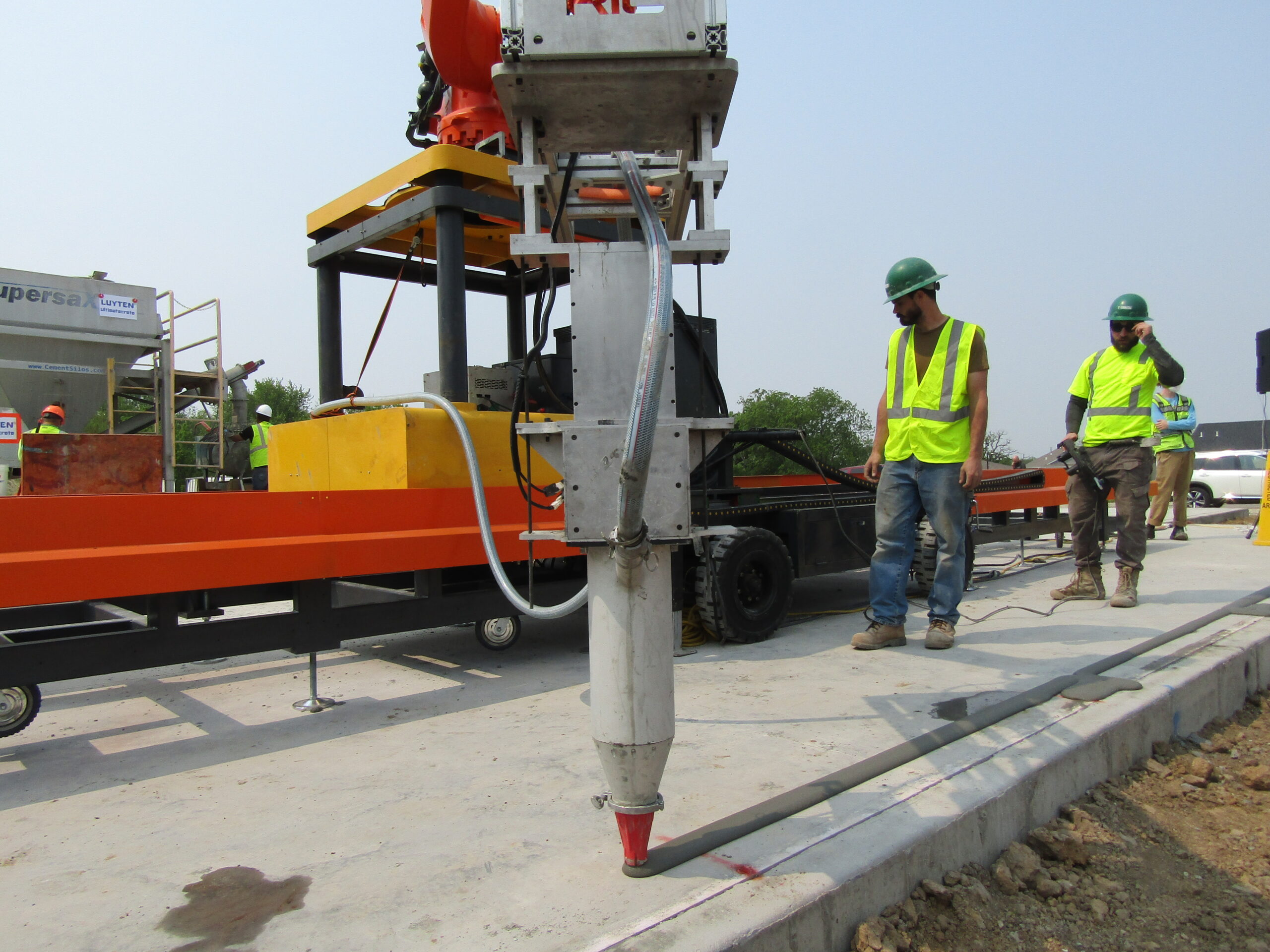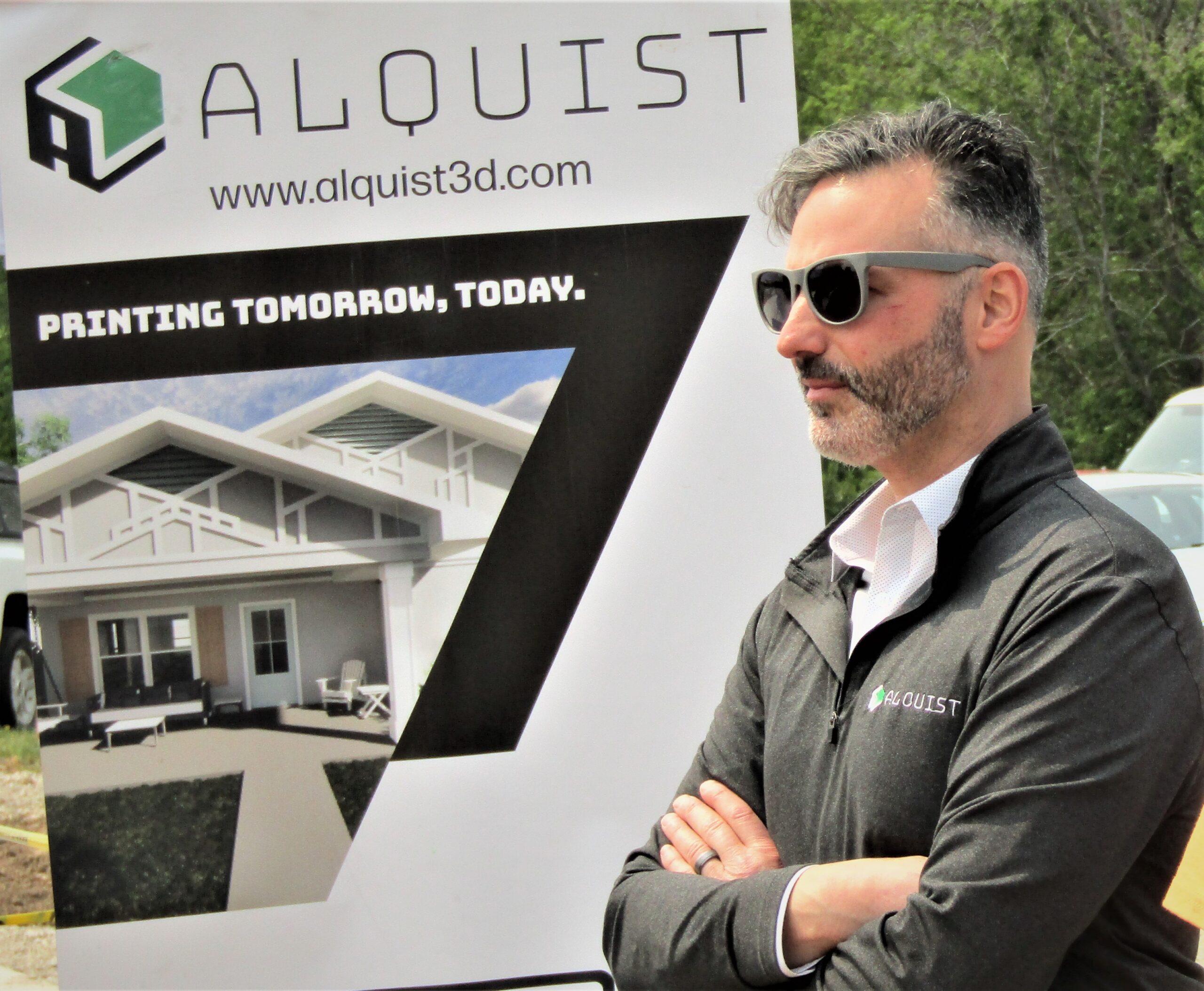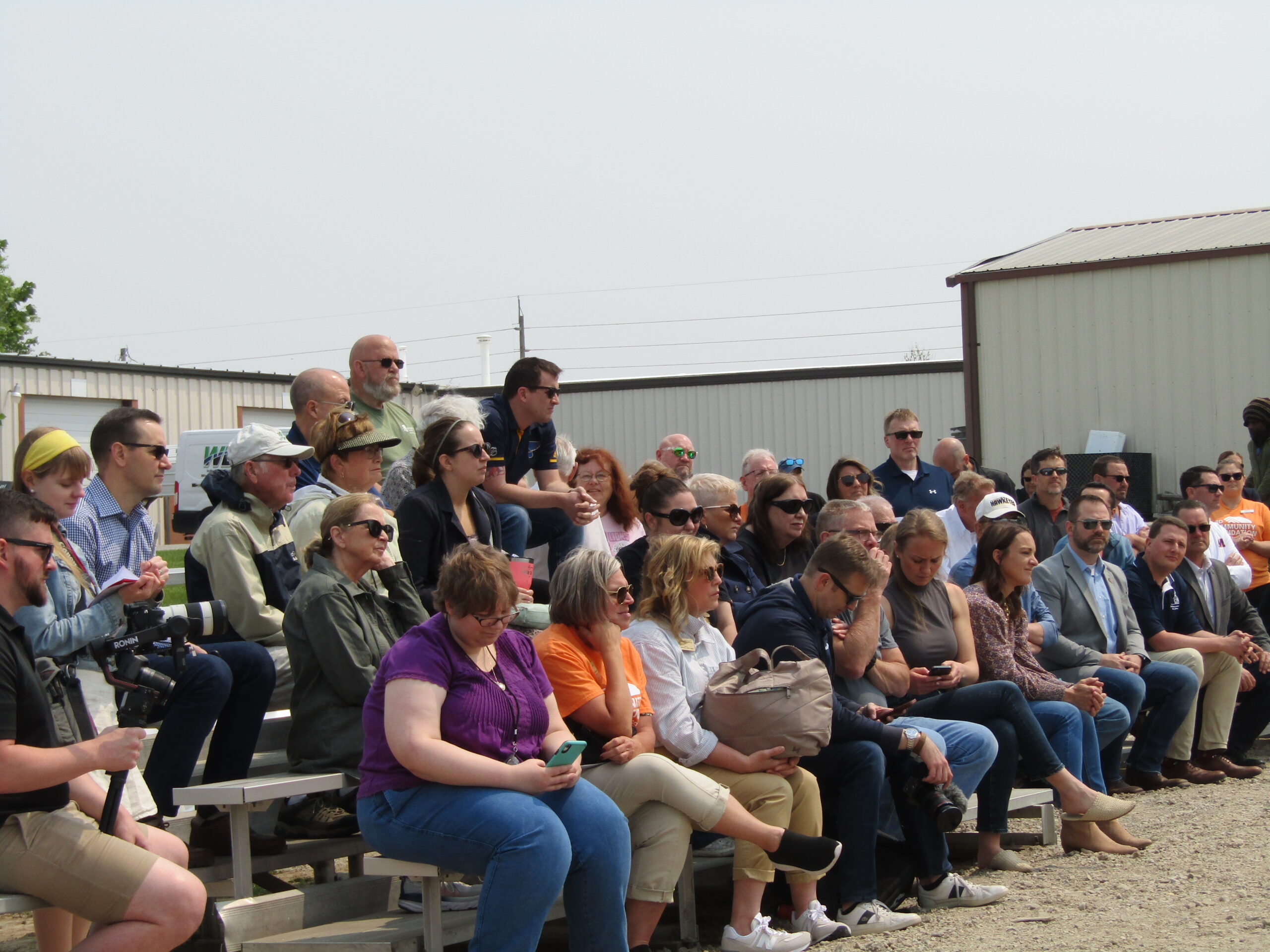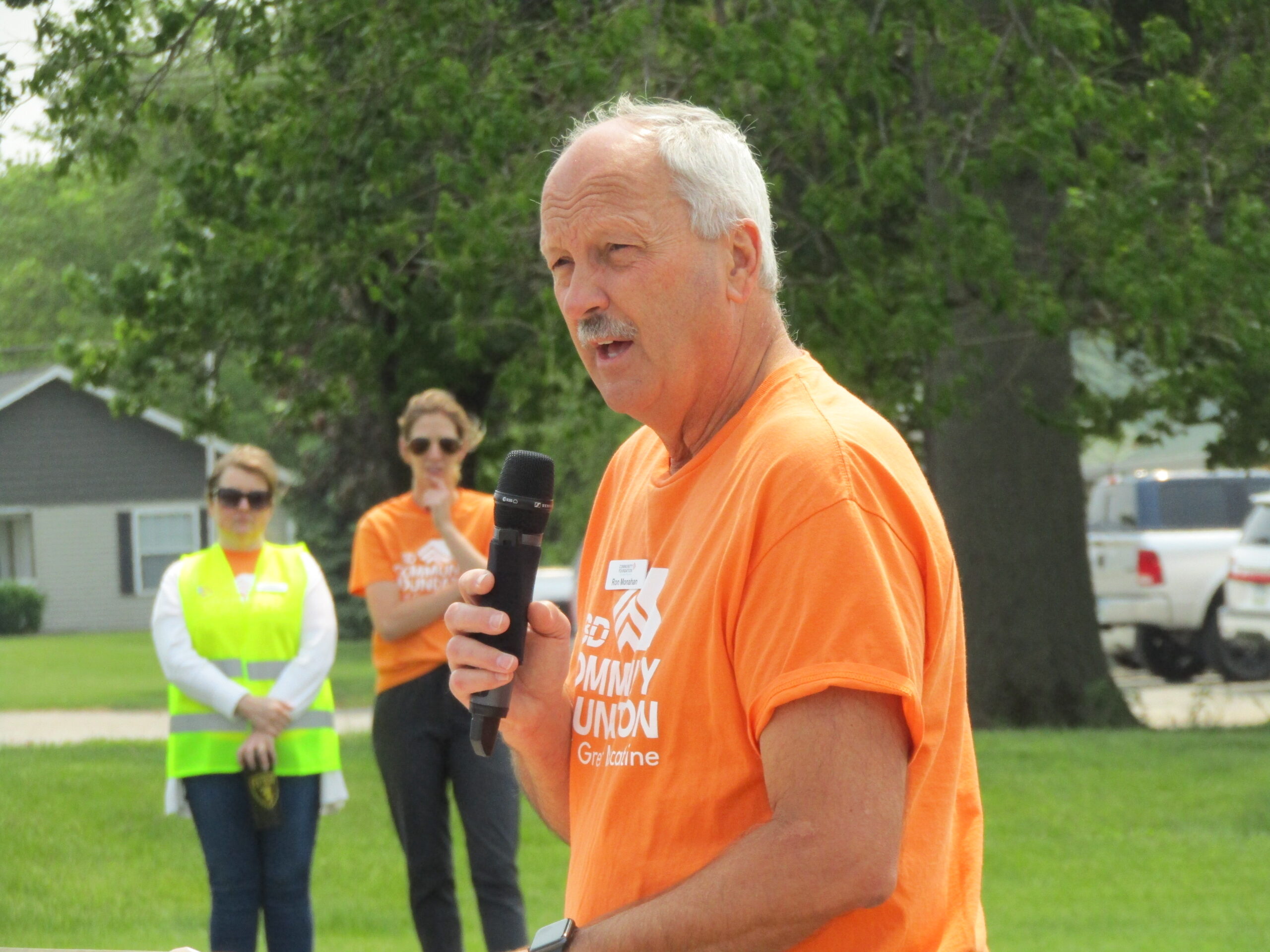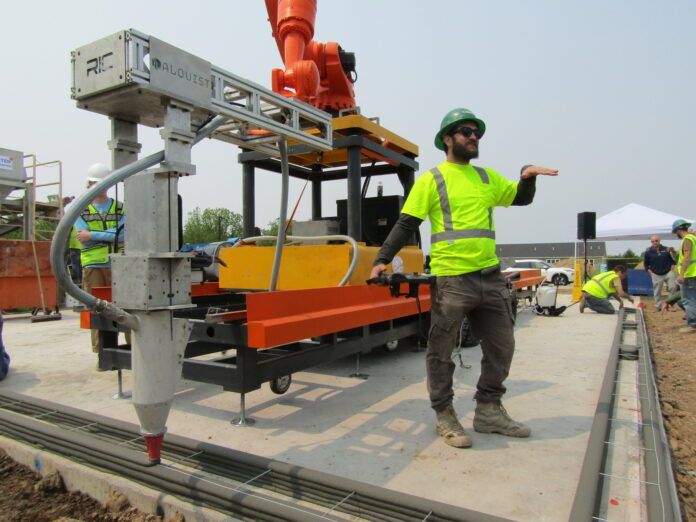
MUSCATINE, Iowa – This city will soon make housing history with the help of a big 3D printer robot.
The state’s first 3D printed house is currently under construction in Muscatine. Once complete, the new house will be one piece of the solution to the severe housing shortage in the region.
At least, that’s the hope of community leaders who gathered at the construction site Friday, May 19, to celebrate the beginning phases of the home project.
“We’re not doing this just because we can. We’re building houses because we need the houses here. But, it is cool,” said Ron Monahan, housing initiatives manager with the Community Foundation of Greater Muscatine, one of the project’s community partners.
Mr. Monahan and about 100 other community, government and business leaders gathered on Duncan Drive in the Arbor Commons subdivision for a ceremony to celebrate the launch of the home’s construction while calling out the need for much more housing in the city.
“If we want to grow the community, we need housing,” said Rich Dwyer, chairman of the board of directors for the Community Foundation.
Charla Schafer, the foundation’s president, told the crowd that the goal is to build 10 houses this summer and fall in Muscatine because of the drastic housing shortage in Muscatine. That shortage could be seen a few months ago when only 55 homes were on the market for sale in the region, she added.
“Change is hard and sometimes uncomfortable. … But we have to be impatient. Our community can’t wait,” Ms. Schafer said.
According to information from the Community Foundation of Greater Muscatine: “A larger shortage of affordable housing is burdening residents, increasing home and rental costs, and creating economic ripple effects in residents’ lives.”
But the star of the show on Friday was a massive robotic machine – called an RIC Tech 3D Printer – with an orange arm that was slowly moving on a rail system and building the exterior walls of the house by putting down one layer after another of a concrete mix to form those walls.
When the robot starts to work, it’s a “conversation killer,” because everybody in the crowd stops talking and starts looking at the robot at work, said Zachary Mannheimer, founder and CEO of Iowa City-based Alquist 3D, the company doing the 3D building portion of the home.
Despite the 3D robot on the job site, Mr. Mannheimer said most of the Muscatine home will be built much like traditional stick-built homes. In fact, skilled tradespeople still will be needed to build the home after the 3D printer gets done with the wall work. The build project will still need plumbers, roofers, HVAC workers, electricians and many others to finish the home, he added.
And once it is complete, Muscatine’s first 3D home will be a top-quality home that is built to last.
“It’s not going to look like a Freddie Flintstone home. … It’s going to be great,” said Ms. Shafer.
According to Alquist 3D information, here are some of the advantages and features of a 3D home:
- The base of a 3D printed home is constructed in 12 days or less. Alquist 3D has done it as fast as 28 hours. The finishes (plumbing, electrical, etc.) will take another six to 10 weeks.
- A 3D home can reduce labor costs by up to 80%.
- An Alquist 3D home in Virginia is estimated to have saved 15% per square foot in building costs.
- 3D homes are printed with a concrete mix called “crete.” This mix makes homes very durable and less vulnerable to the elements compared to stick-built homes.
- 3D homes are based on a design plan that is uploaded from a digital file. The 3D printer creates a blueprint of the design from computer-aided design software and follows the design as it prints.
The Muscatine 3D home, which should be complete and put on the market this fall, will be 1,400 square feet with three bedrooms and two bathrooms, said Mr. Mannheimer.
The Alquist 3D leader called the 3D technology the “natural advancement” in home building. But added that while he thinks 3D homes will be part of the future of home constriction, there are three factors slowing down the new industry: 1. Older printers were big and slow. That problem is being resolved with a new generation of smaller, more agile and faster printers. 2. Some of the additive concrete materials needed for the 3D printers need to be shipped in from overseas. That problem also is being resolved with the production of local materials. 3. Finally, more workers need to be trained for the new 3D technology. That issue is being addressed through a new training program by Muscatine Community College (MCC) that will prepare students for the 3D industry.
“We sometimes have a problem getting young people into the building trades. … They don’t want to swing a hammer. They do want to play with a giant robot,” said Mr. Mannheimer.
Naomi DeWinter, president of MCC, told the crowd that students soon will have hands-on training in the 3D home field and help resolve the community’s housing crisis.
Many guests attending the Friday ceremony said they were impressed with the technology and looking forward to seeing the finished home product.
“It’s still in its infancy, but I think this is the future,” said Chris Hasken, a Muscatine businessman in attendance.


